SoundBike
SoundBike is an audio visualizer that allows you to visualize both the audio waveform and audio spectrum. It's setting is in a Studio Ghibli inspired environment. The front wheel rings light up according to the sound amplitude, and the back wheel spectrum rings light up according to frequency.
SoundBike Video Link

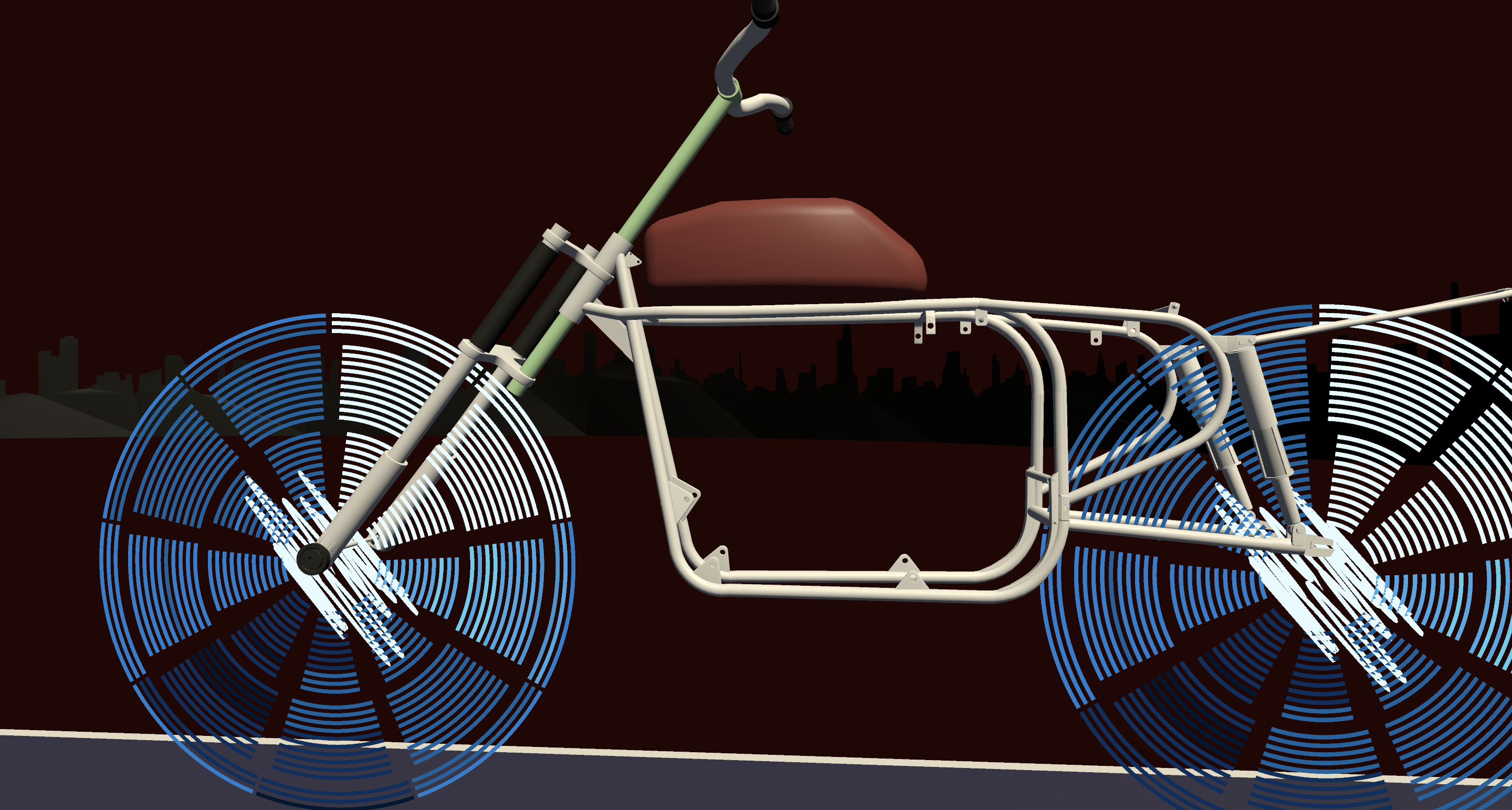
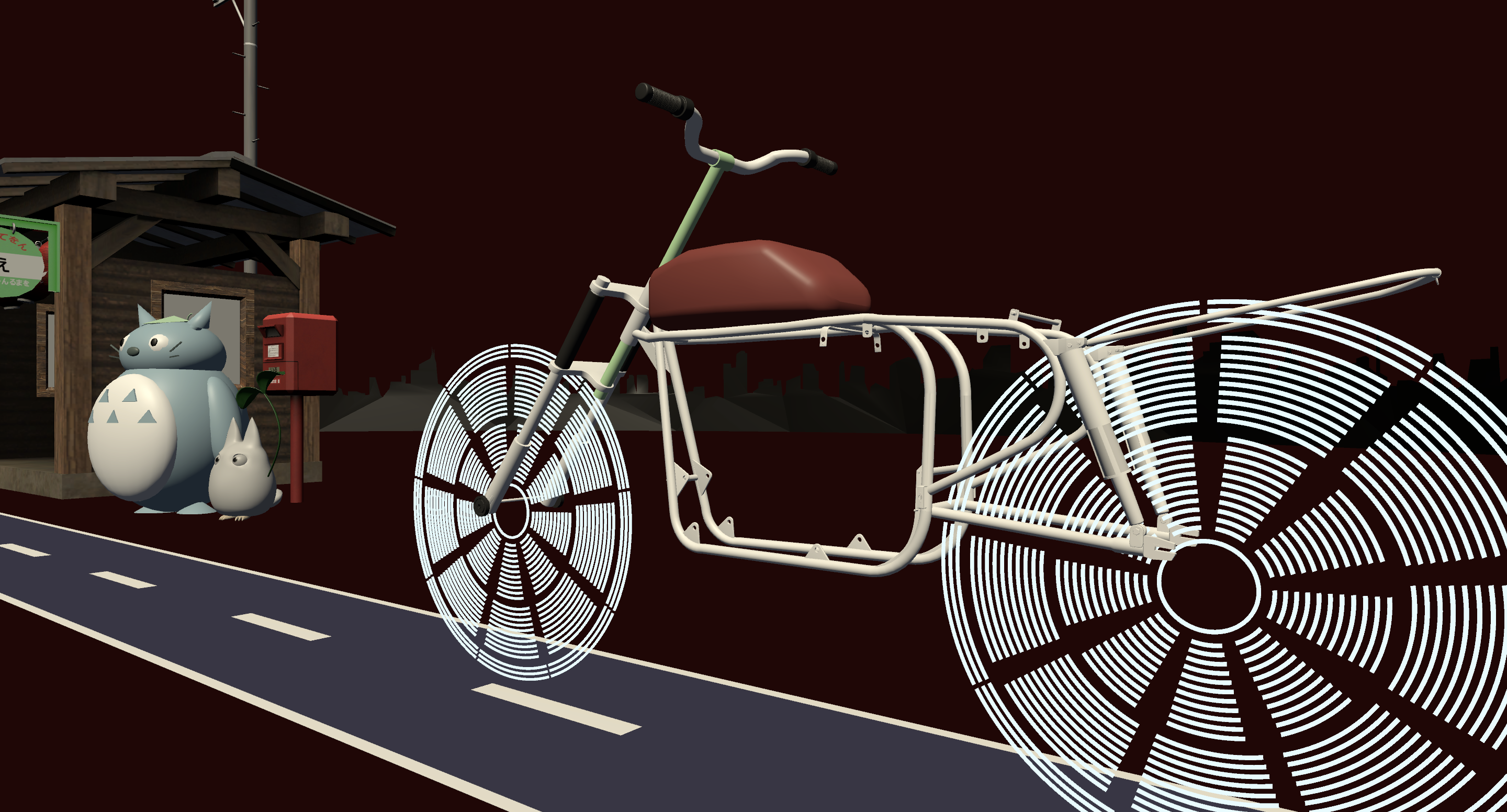
In creating SoundBike, I was thinking of ways to incorporate in some type of 3D environment the round audio visualizer I had previously made. I was inspired by some of the Studio Ghibli works such as Spirited Away and My Neighbor Totoro and decided to use some visual and musical themes from these works. I thought bicycle wheels would be a fitting way to incorporate the audio visualizer. I found it surprisingly challenging to design the narrative through ChucK and make it sound like how I envisioned while also capturing the highlights of the audio visualizer and the setting. Working with the 3D models was also quite difficult. I had wanted to incorporate some user input of being able to control the bike and its position, but it proved to be more challenging than expected.
I want to thank Kunwoo for his endless and amazing help and support in office hours and on Discord! During the course of this project, I also used the following 3D model assets: White Totoro, Blue Totoro, Kyoto Bus Stop, Bike Frame, Road, and Skyline. I also followed ChucK tutorials by Clint Hoagland.
SoundBike Resources
SoundBike Unity Build: SoundBikeNarrative
Download Link, Google Drive Link
SoundBike Unity Build: SoundBikeMic
Download Link, Google Drive Link
SoundBike Unity Project
Download Link, Google Drive Link
To use the audio visualizer with microphone input, please run "SoundBikeMic" and the mic to make and see the sounds! To run the narrative, please run "SoundBikeNarrative," and the narrative will automatically play when opened. The build labeled "SoundBikeNarrative" is to run the narrative, and the build labeled "SoundBikeMic" is to run it with mic input. The visualizer is built for MacOS Intel 64-bit.
Homework #2: Milestone 2
Milestone Video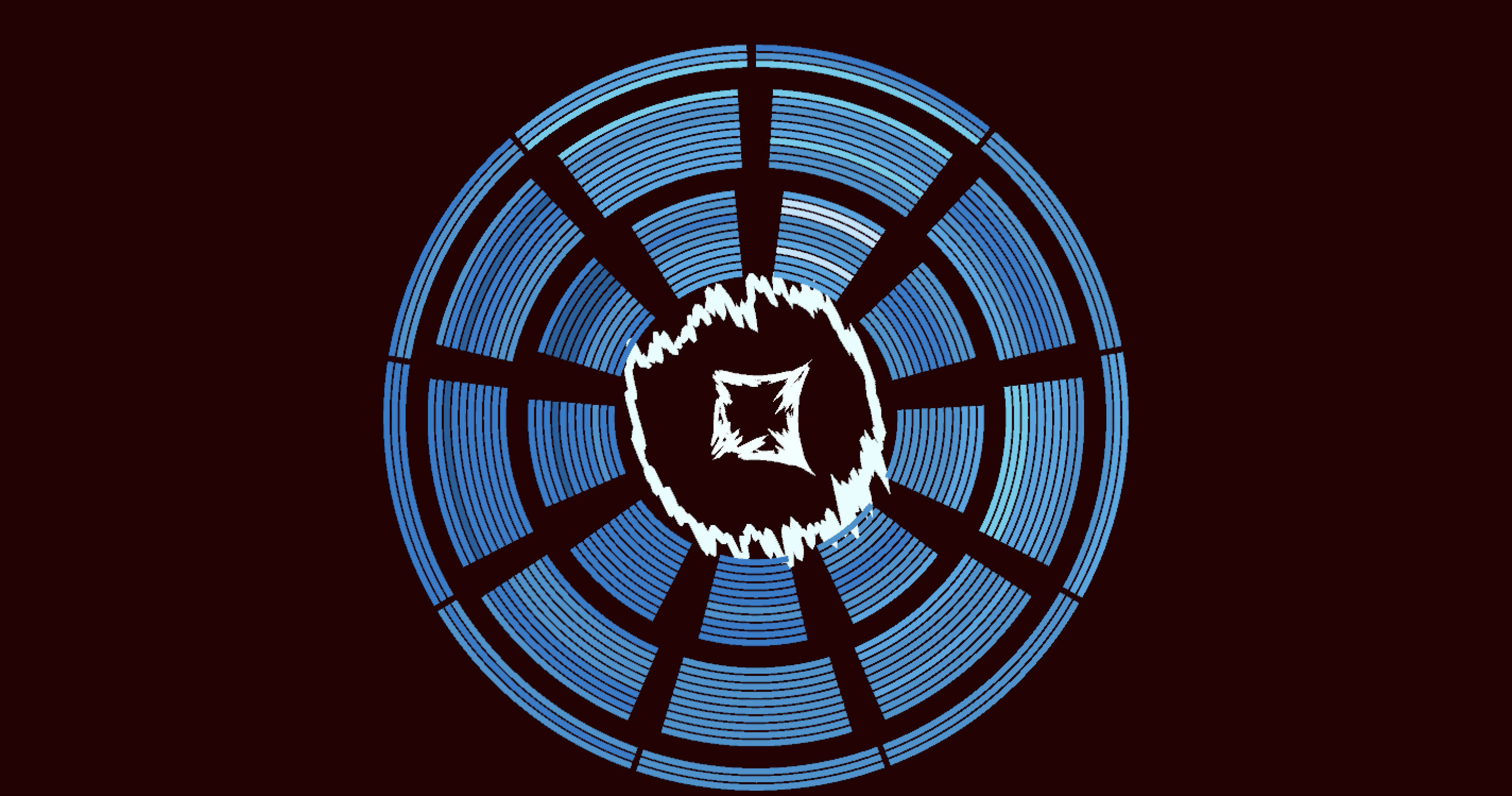
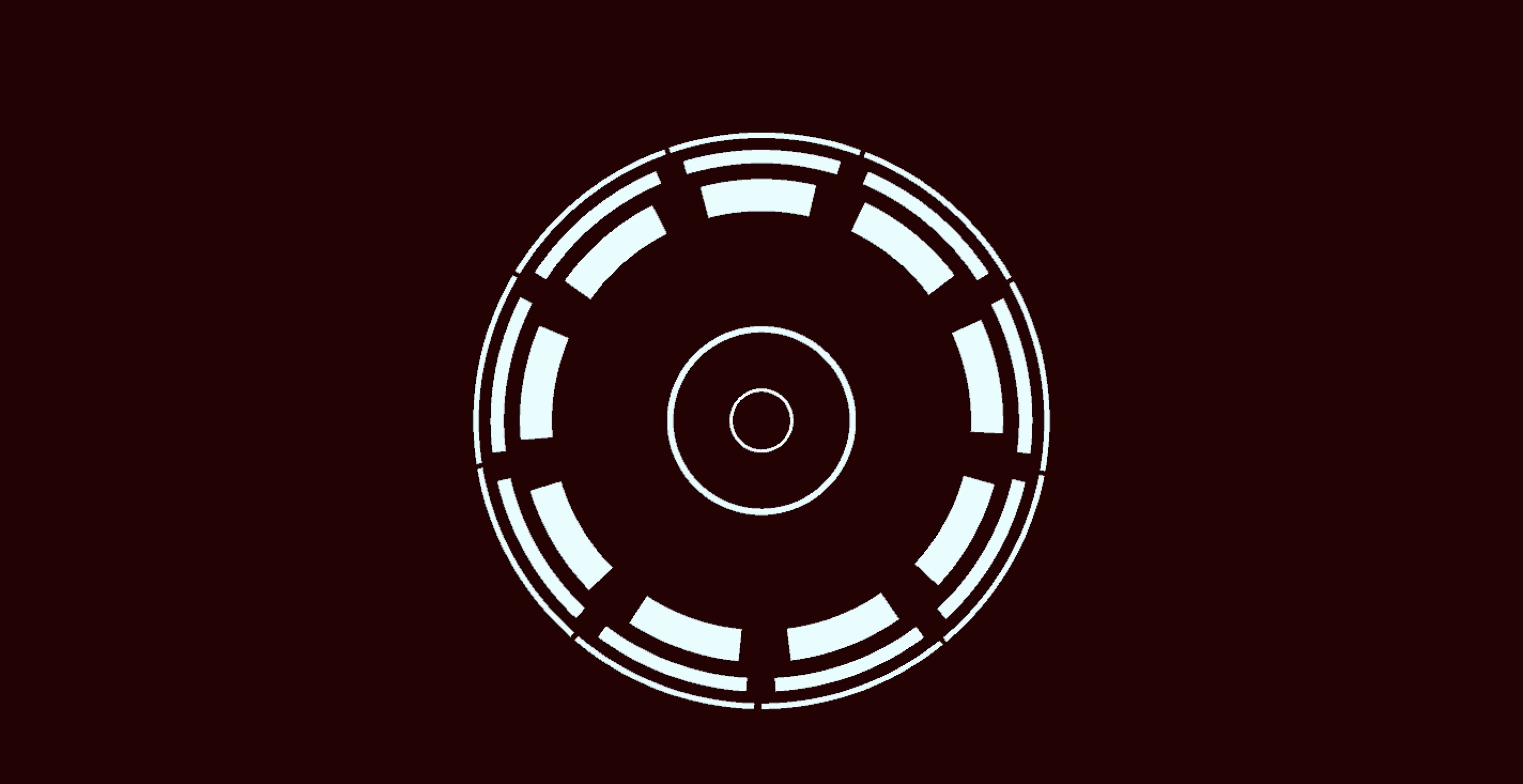
Homework #2: Progress Update

I was initially inspired by the flipping card wall in the GSB. I saw it recently and was absolutely mesmerized. I have been playing around with more circular designs and have run into some trouble with setting the coordinates correctly. The waveforms have been a little hard to control and haven't been acting in the way I envisioned. I have also been testing different values for the color of the spectrum and how it should show the different frequencies because currently, it doesn't seem too clear.
Also, I am currently working on making the spectrogram history more accurate because it doesn't seem to be displaying history very clearly. I think there's a better way to display the frequncies and history clearly and in a pleasing way. I am also working on making the overall design look more aesthetic but also informational.
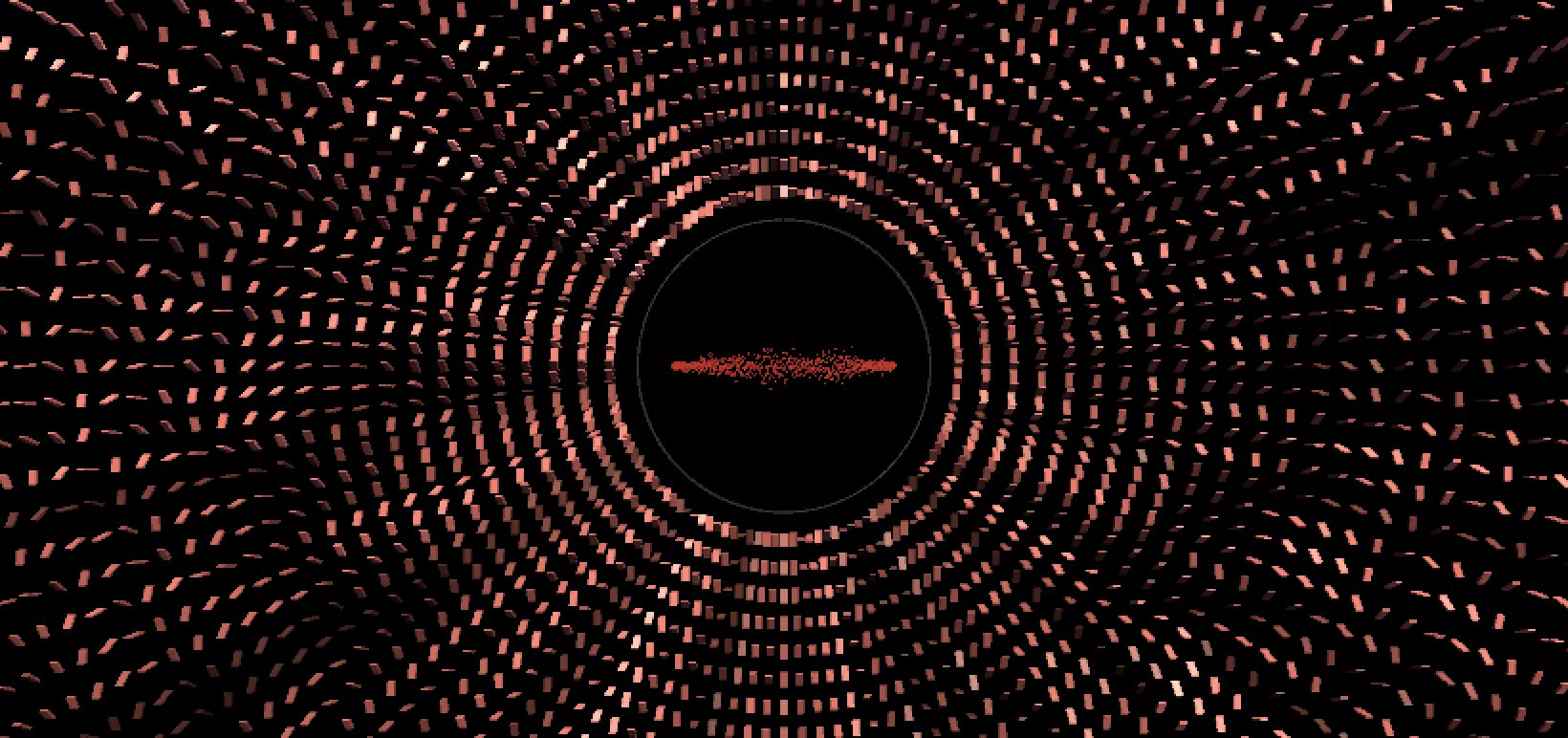
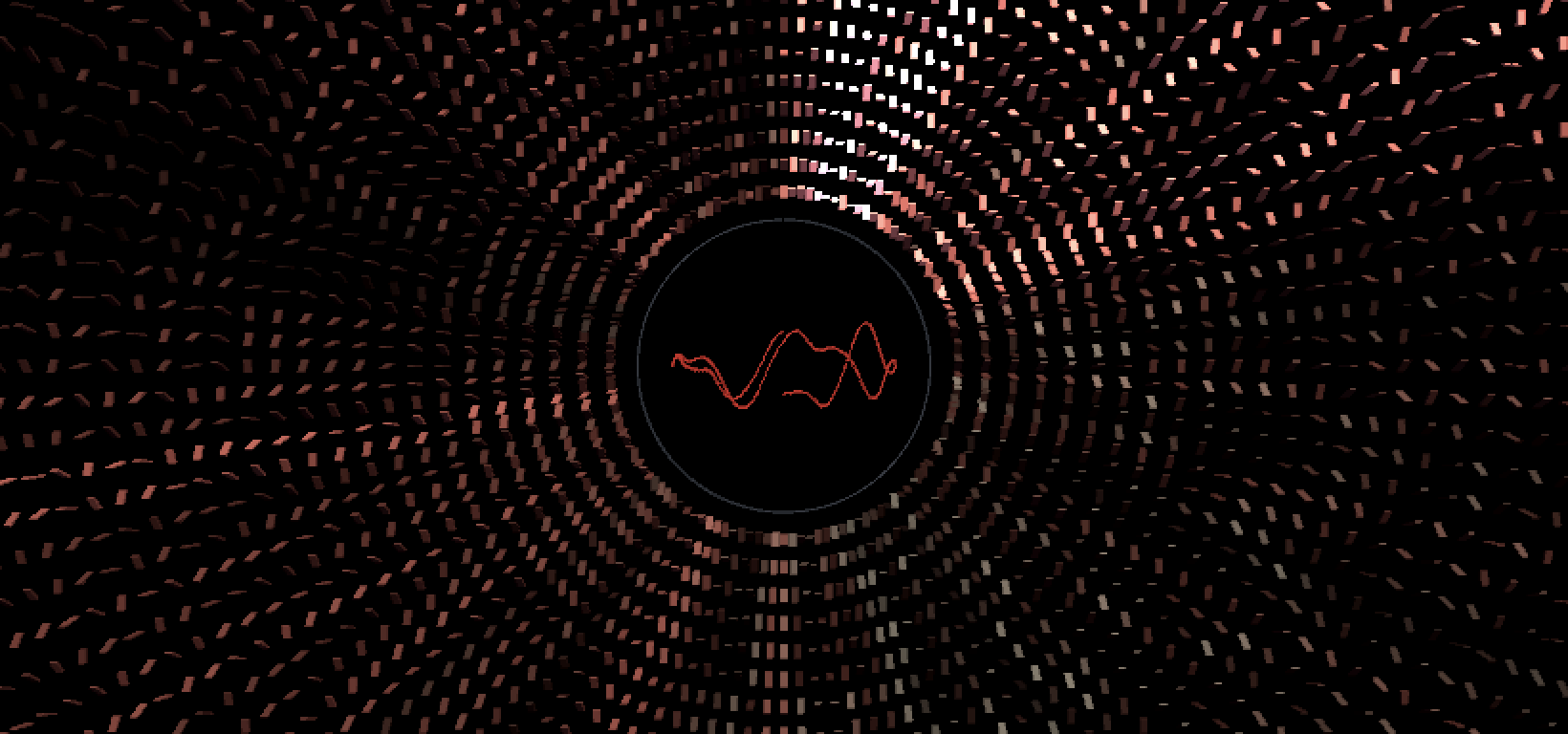
Homework #2: Milestone 1
After going through and following the 3 tutorials on Unity and Chunity, my first impression was that Unity is a lot more programming than I expected. I haven't used Unity before, and I thought that it was going to be similar to 3D graphics software such as Blender. However, the coding felt familiar and a little comforting. Going through the roll-a-ball tutorial and adding on Chunity to that was fun to do. I was also surprised at how easily ChucK integrated with Unity. It felt fairly seamless with being able to directly just use ChucK code normally and add it in to the Unity scripts. The audio visualizer tutorial was also great to follow but fairly basic. There's definitely a lot of experimentation and docmentation search I need to do to make a good audio visual experience.
Some ideas I had for the sound visualizer design were to play around with some of the particle effects in unity because those look really fun and pretty. For example, working with a smoke and fire or fog theme would be interesting, and there's also something called a plexus effect that looks amazing. I am also considering whether I want to make the sound visualizer more concrete with physical themes like an object/location or make it more abstract with just various shapes. I am currently playing around with making it more abstract (lines, circles, spheres, etc.), but as I tweak the visualizer, I do want to make it follow a specific, central theme like a water/lake themed or space themed.